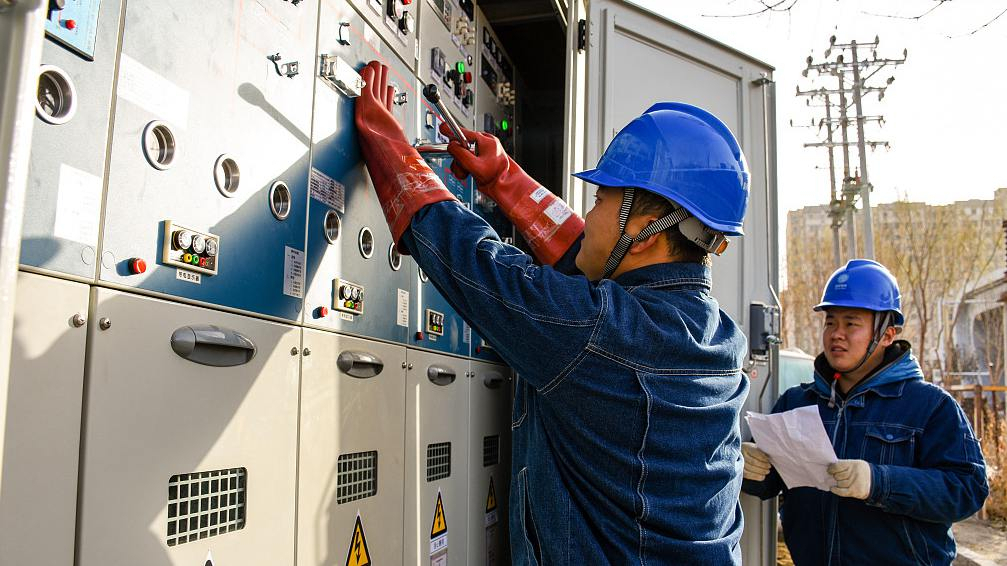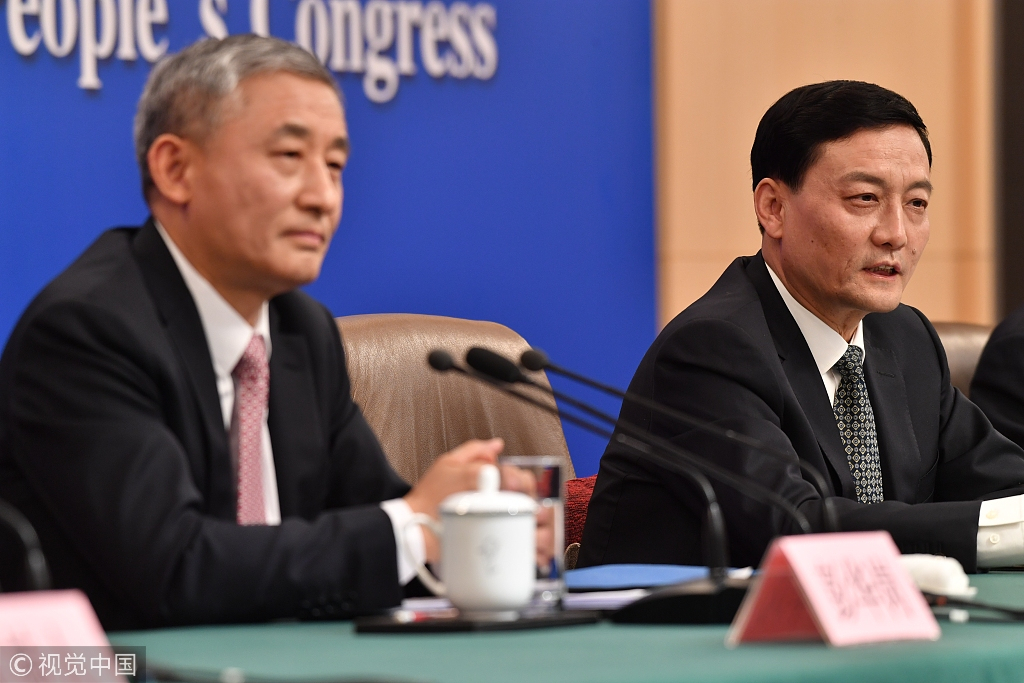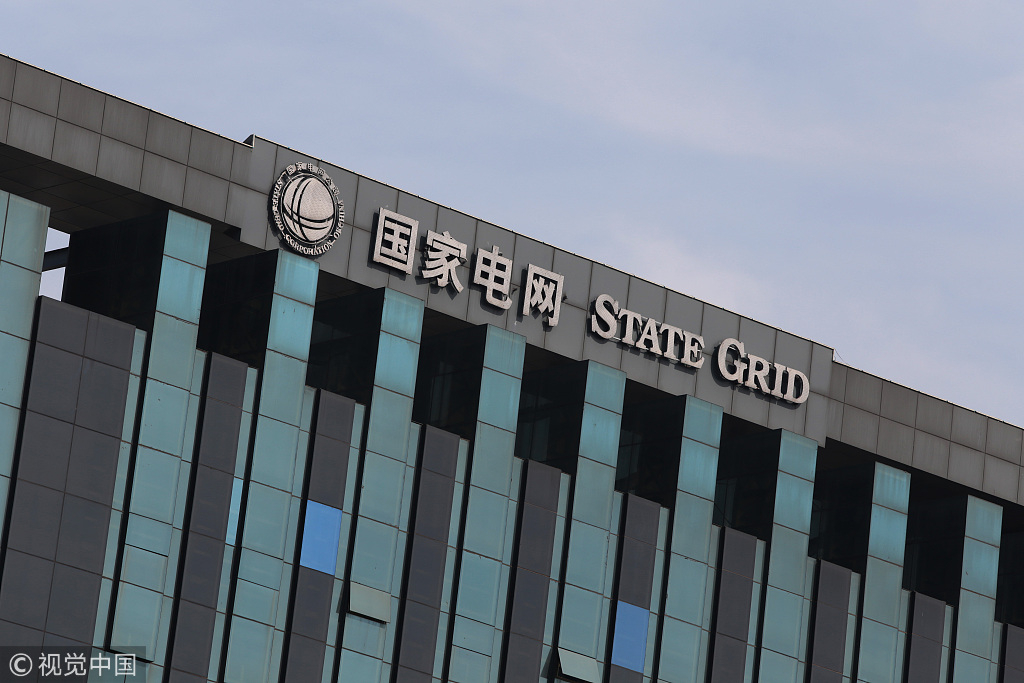
Opinion
18:15, 09-Mar-2019
"Competitive Neutrality" in response to global anticipation
Li Jin

Editor's note: Li Jin is vice president of the China Enterprise Reform and Development Society. The article reflects the author's opinion, and not necessarily the views of CGTN.
The State-owned Assets Supervision and Administration Commission of the State Council (SASAC) held a press conference in Beijing on state-owned enterprise (SOE) reform and its development on Saturday. Xiao Yaqing, the minister in charge of the SASAC, stated that China will push SOE reform forward and the mixed-ownership reform was actively promoted.
At present, one of the major difficulties in China's market-oriented reform lies in SOE reform. The solution to the underlying cause of the conundrum is competitive neutrality in which private enterprises and state-owned enterprises can compete on a level playing field.
This principle was set out right after the Third Plenary Session of the 18th Communist Party of China Central Committee, but it was very difficult to follow through, causing denouncement by western countries.

The State-owned Assets Supervision and Administration Commission of the State Council (SASAC) held a press conference on March 9, 2019. /VCG Photo
The State-owned Assets Supervision and Administration Commission of the State Council (SASAC) held a press conference on March 9, 2019. /VCG Photo
At a time of frequent international trade frictions, there are heated discussions about China's status as a market economy.
Last year, the U.S. Department of Commerce released a report titled "Evaluation of China's Non-Market Economy Status" which presented evidence that the "visible hand" interfered too much in the economy, especially by supporting SOEs in natural monopoly industries.
The 2019 government work report proposes the principle of "competitive neutrality." The new rule is basically in line with the requirements of international standards and substantial progress is anticipated in 2019.
The report's description of SOE reform is different from that of the previous one in that it highlights the prominent contradictions and key links with an accurate focus, clear direction and strong operability.

Xiao Yaqing, the minister responsible for the SASAC, speaks at a press conference of the SASAC March 9, 2019. /VCG Photo
Xiao Yaqing, the minister responsible for the SASAC, speaks at a press conference of the SASAC March 9, 2019. /VCG Photo
In SOE reform, there are five major focal points: reform of the companies invested and operated by the state, mixed ownership reform, professional management, separation of management and operation and removing zombie enterprises in accordance with the law. These tasks are embedded in the five major tasks of state-owned assets reform, SOE ownership reform, corporate governance reform, monopoly industries reform and supply structure reform, which are almost all major liberalization initiatives.
Reform of companies operated by the state
In the reform of the authorized management system of state-owned capital, the reformed companies once invested in and operated by the state will become the "juncture" between the government and the state-owned enterprises and the “fence” which prevents the government from overstepping the mark.
Mixed ownership reform
As for the content of mixed ownership reform, the report last year has it this way: steadily push forward the reform of state-owned and state-invested enterprises. This year, the word "proactively" is added before "steadily."
Since 2013, the rhetoric about mixed ownership reform has changed from "proactively" to "orderly and steadily." In 2019, scope expansion and power delegation have become the keywords for the mixed ownership reform of state-owned enterprises.

VCG Photo
VCG Photo
At present, in the third batch of mixed ownership reform pilot projects, 9 out of 10 reform plans for central SOEs have been approved, and the fourth batch of reform pilot projects involving more than 100 SOEs will be accelerated.
It can be expected that the pilot reform projects will be launched in batches, with the focus shifting from an emphasis on mixed ownership to genuine reform so as to release new dividends for the capital market.
Professional management
The "professional manager" system was first proposed in the government's work report. This indicates that the heads (professional managers) of Chinese SOEs will gradually be recruited through an open hiring process rather than state appointment.
SASAC is expanding the pilot into subsidiaries of central enterprises and local SOEs, and will gradually increase the proportion of SOE executives hired in the open market. The board of directors and executives will no longer be appointed based on one single document issued by the state so that there will be a more stratified management system in these companies. The ultimate goal is to speed up the fair and transparent hiring mechanism of SOE leaderships.
Separation of management and operation
The "separation of infrastructure ownership and operation" in monopoly industries are very meaningful to SOE reform. As a matter of fact, it is about allowing a monopoly in a small number of sectors where monopoly is warranted, and eliminating monopoly and bringing in competition in most sectors. The government's work report unambiguously states the "separation of infrastructure ownership and operation," which shows the attitude and determination of the central government in this area once divided in opinions.
Removing zombie enterprise
Legally removing zombie enterprises is an important measure of market liberalization. By restraining government interference, maintaining the authority of the market, and deregistering zombie enterprises through legal procedures, it has institutionalized the handling of inactive enterprises.
Liberalizing electricity, oil, and railway
According to 2019 government work report, the state has taken the boldest steps in market-oriented reform by liberalizing the three major sectors of electricity, oil, and railway. The reform approach in these three areas is "separation of management and operation."
The goal of power system reform is "separate operation of power generation and the power grid, separate operation of main business and spin-off business, separate operation of power transmission and distribution, and establishment of a price bidding system." At present, the separate operation of power generation and the power grid has been achieved. Some progress has been made in the separation of the main business and spin-off business of electricity companies.

The building of State Grid. /VCG Photo
The building of State Grid. /VCG Photo
However, progress is slow in establishing the separate operation of power transmission and distribution and in building a sound price bidding system.
The most-watched fact is that the establishment of the national oil and gas pipeline company and the separation of the infrastructure ownership and operation in the sector will help break the monopoly of the petroleum and petrochemical industry and enhance the competitiveness of the industry.
It will have a great impact on the current competitive landscape and will be conducive to the implementation of the overall strategy of "controlling the price of energy transmission and distribution while liberalizing the production and end-use price" in the new round of reforms. The establishment of the oil and gas pipeline company is only part of this round of oil and gas reform, and there will be reform measures in other parts of the industrial chain.
The separation of railway ownership and operation refers to the separation of the national railway network infrastructure from the competitive railway passenger and freight transportation business. A national railway network company and several passenger and freight transportation companies will be established and managed based on their distinctive features. The railway network company will be in charge of the national railway lines, bridges, tunnels, signals, power supply equipment, etc. The liberalization reform of China's largest state-owned enterprise is entering the phase of substantive implementation.
2019 will see the practical implementation of SOE reform measures centered on the principle of "competitive neutrality" which will mark a big breakthrough in reforming SOEs in China.
(If you want to contribute and have specific expertise, please contact us at opinions@cgtn.com)

SITEMAP
Copyright © 2018 CGTN. Beijing ICP prepared NO.16065310-3
Copyright © 2018 CGTN. Beijing ICP prepared NO.16065310-3